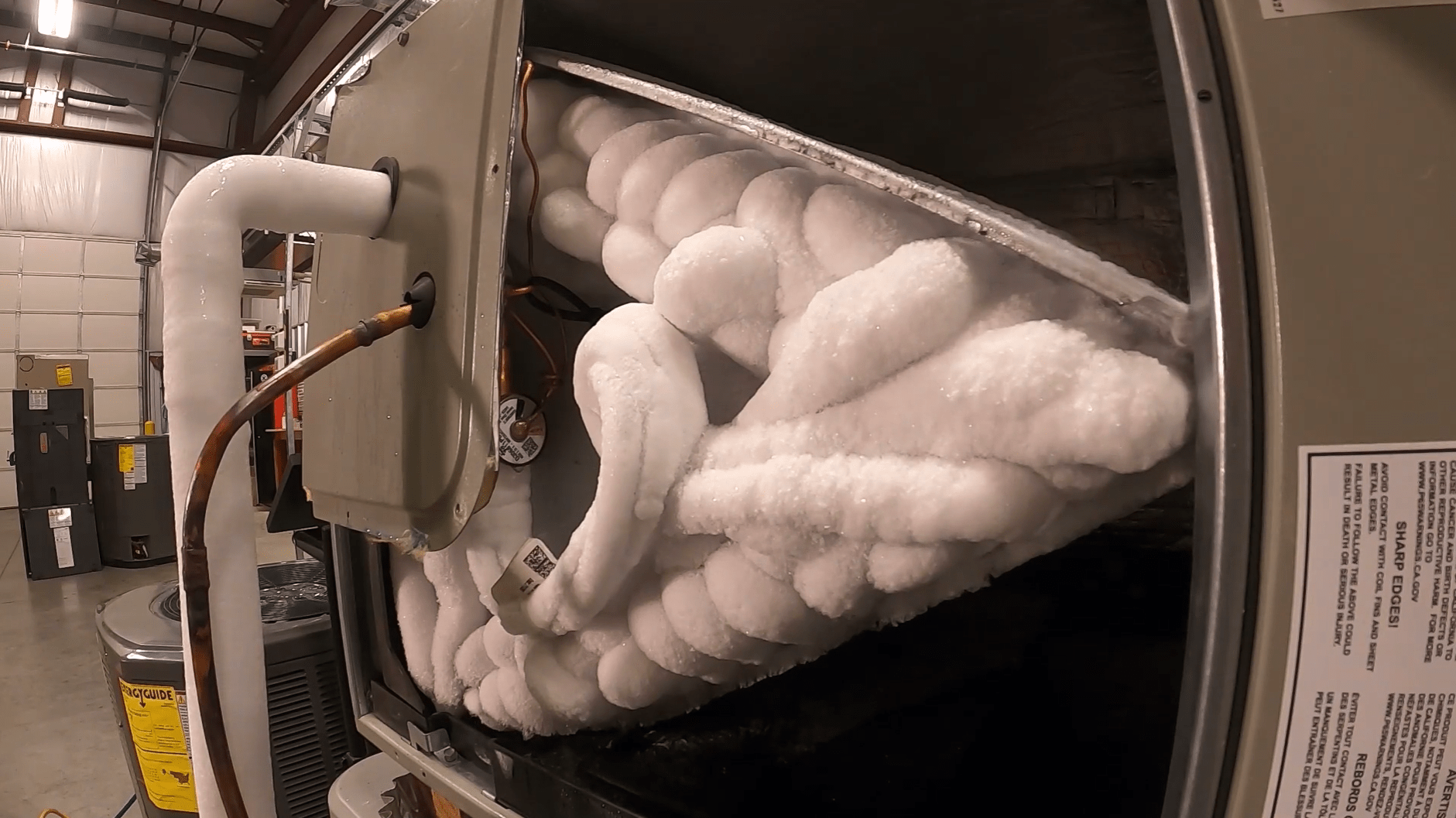Icy Air Conditioner Pipe - Reasons and How to Fix the Problem
Icy Air Conditioner Pipe - Reasons and How to Fix the Problem
Blog Article
What're your thoughts about What Causes AC Pipes To Freeze??

Introduction
Uncovering that your air conditioning pipe is iced up can be worrying, specifically throughout hot summertime when you count on your air conditioner one of the most. Recognizing what to do in such a circumstance is essential to avoid more damage to your air conditioning system and ensure your comfort indoors.
Comprehending the Causes
A number of elements can add to the cold of an air conditioner pipeline. Understanding these causes can assist you deal with the concern successfully.
Absence of Airflow
One usual source of a frozen air conditioner pipe is inadequate air flow. When the airflow over the evaporator coil is restricted, it can cause the coil to go down below freezing temperature level, leading to ice formation on the pipe.
Low Refrigerant Levels
Insufficient refrigerant degrees in your air conditioning system can also lead to an icy pipe. Low refrigerant levels can trigger the stress in the system to go down, resulting in the cold of wetness on the evaporator coil.
Cold Weather Conditions
In cooler climates, freezing temperatures outside can add to the cold of air conditioner pipelines. If your AC system is not properly protected or if there are leakages in the ductwork, chilly air can infiltrate the system, creating the pipe to ice up.
Dirty Air Filters
Filthy or blocked air filters can limit airflow in your air conditioner system, resulting in numerous issues, consisting of a frozen pipeline. It's necessary to change or clean your air filters regularly to make sure proper air flow and protect against ice accumulation.
Indicators of a Frozen Air Conditioner Pipe
Acknowledging the signs of a frozen air conditioner pipe is essential for timely activity.
Reduced Airflow
If you observe a substantial decrease in air flow from your vents, it could suggest an icy pipeline.
Ice Buildup on the Pipe
Noticeable ice buildup on the refrigerant line or the evaporator coil is a clear indicator of an icy air conditioning pipeline.
Weird Sounds from the Unit
Uncommon audios, such as hissing or bubbling, coming from your AC system can indicate that there's ice existing on the pipeline.
Immediate Actions to Take
When confronted with an icy AC pipeline, it's essential to act swiftly to prevent more damages to your cooling system.
Shutting off the AC
The initial step is to shut off your ac system to avoid the system from running and aggravating the problem.
Checking for Blockages
Check the location around the indoor unit for any blockages that might be obstructing air flow, such as furnishings or drapes.
Defrosting the Pipe
You can make use of gentle techniques like placing towels soaked in warm water around the frozen pipe to help thaw it slowly.
Preventive Measures
Taking safety nets can aid stay clear of future events of an icy AC pipeline.
Normal Maintenance Checks
Set up normal maintenance consult an expert HVAC specialist to make certain that your a/c system is running effectively.
Transforming Air Filters
Consistently change or clean your air filters to prevent air movement constraints and preserve ideal performance.
Protecting Exposed Pipes
If your air conditioning pipelines are subjected to cool temperature levels, think about shielding them to stop freezing during winter months.
Looking For Professional Help
If DIY methods fall short to solve the issue or if you're unclear about just how to continue, it's ideal to look for aid from a certified HVAC technician.
When DIY Methods Fail
If your attempts to thaw the pipeline or address other issues are not successful, it's time to contact a professional.
Significance of Hiring a Professional HVAC Technician
A certified HVAC professional has the know-how and tools needed to diagnose and fix problems with your air conditioning system safely and properly.
Conclusion
Managing a frozen air conditioner pipe can be an irritating experience, yet knowing how to react can help lessen damages and bring back convenience to your home. By understanding the causes, identifying the signs, and taking punctual action, you can properly deal with the concern and prevent future incidents.
Frozen AC Line: Why It Happens & What To Do About It
A frozen AC line can be a rather peculiar sight in a place like Phoenix, Arizona where nothing ever freezes. In this post, we’ll discuss what makes an air conditioner line frozen – and what you can do about it.
Dirty Air Filters
Did you know that you should be cleaning or replacing your air filters on a monthly basis? Failing to do this can result in airflow issues that, in turn, cause your evaporator coils and lines to freeze over. You’ll notice a buildup of ice on both components, although the buildup on your pipes will, of course, be more evident unless you open your air condition up to reveal the coils.
What To Do About It
Give your air filter a good cleaning if it’s reusable. If not, replace the filter outright. Next, switch your air conditioner’s fan setting on and leave it there for 2-3 hours. This will draw warm air in, helping to thaw your evaporator coil. You can also check out this article for some tips on cleaning the coils themselves if you’d like to speed the process up. Before you switch the unit back to its normal state, make sure the supply vents are completely unobstructed and free of dust or other debris.
If you keep having this issue even after replacing your filters regularly, contact a local HVAC repair company and have them inspect your evaporator coil, ductwork, and any other components that may be at fault. If you live in the Phoenix, Arizona area, give American Home Water and Air a call.
Low Refrigerant Levels/Leakage
What To Do About It
Contrary to what air conditioner “recharge” companies often tell their clients about refrigerant, it should never need to be simply refilled. You see, refrigerant runs in what experts refer to as a “closed loop.” Refrigerant really shouldn’t be leaving that loop. If it is, you’ve got a leak.
Paying someone to come and pump more refrigerant into your system (aka “recharge” it) isn’t the solution. Doing that will simply kick the can down the road. Besides, refrigerant leaks can be harmful to the environment and people in your home.
Rather, you need to take care of the leak with the help of a technician. Check out this article for some more information about dealing with air conditioners that are leaking refrigerant. Before you contact a technician, switch your thermostat to the off position. Then, switch the fan setting on and let it run for 2-3 hours so the unit can thaw.
Improper Temperature Setting
Improper temperature settings can also cause a drop in your air conditioner’s pressure. What many people don’t realize is that air conditioners are actually designed to run when temperatures have fallen above roughly 60 degrees Fahrenheit. If you run the unit when it’s cold outside, you’ll run into many issues, including frozen components.

We hope you enjoyed reading our article about Air Conditioner Frozen? How To Fix your Frozen AC Line. Many thanks for finding the time to browse our short article. So long as you enjoyed reading our blog post if you please don't forget to share it. Thank you for your time. Don't hesitate to visit our website back soon.
Prices & Booking Report this page